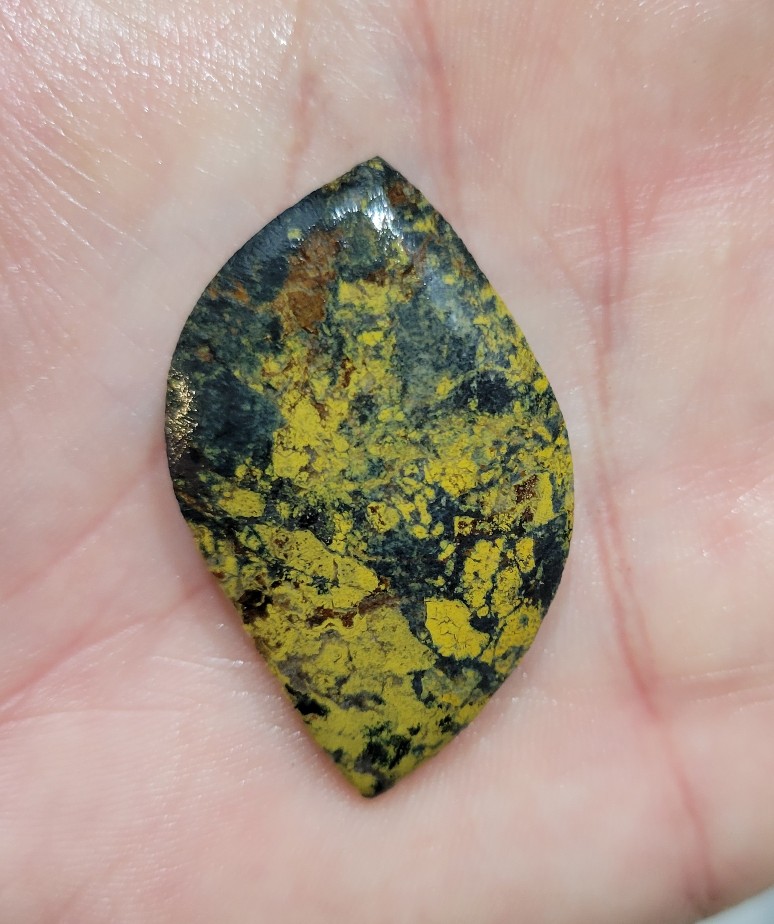|
|
Post by miket on Feb 13, 2022 21:40:31 GMT -5
I don't know what this one is- but I do know that it came from Tommy. Any ideas? Still needs polished, thanks for looking.   |
|
|
|
Post by jasoninsd on Feb 13, 2022 21:43:05 GMT -5
I'm guessing Stoney Creek... The key word in that would be "guessing"! LOL I like the shape you chose on that one my friend!  |
|
Tommy
Administrator 
Member since January 2013
Posts: 12,989
|
Post by Tommy on Feb 13, 2022 22:06:29 GMT -5
I'm guessing Stoney Creek... The key word in that would be "guessing"! LOL I like the shape you chose on that one my friend!  My guess as well ... the yellow+hematite is a pretty good indicator. |
|
|
|
Post by miket on Feb 13, 2022 22:21:16 GMT -5
I'm guessing Stoney Creek... The key word in that would be "guessing"! LOL I like the shape you chose on that one my friend!  Thanks Jason! |
|
|
|
Post by miket on Feb 13, 2022 22:21:53 GMT -5
I'm guessing Stoney Creek... The key word in that would be "guessing"! LOL I like the shape you chose on that one my friend!  My guess as well ... the yellow+hematite is a pretty good indicator. Thanks Tommy. |
|
Sabre52
Cave Dweller  Me and my gal, Rosie
Me and my gal, Rosie
Member since August 2005
Posts: 20,496
|
Post by Sabre52 on Feb 14, 2022 8:01:28 GMT -5
I was told "Franciscan Melange" is the proper name for this material. It's basically a catch-all for all those jaspers from the Franciscan Formation that have a non-specific pattern in contrast with those that have a specific type of pattern ie. poppies,breccia, magnesite pseudomorphs etc. Melange examples occur almost anywhere the brecciated forms occur. Super common in the area around Creston, Parkfield, Big Sandy Creek, Stony Creek etc. Creston material often has a blue tint to the hematite which is pretty neat.
|
|
















